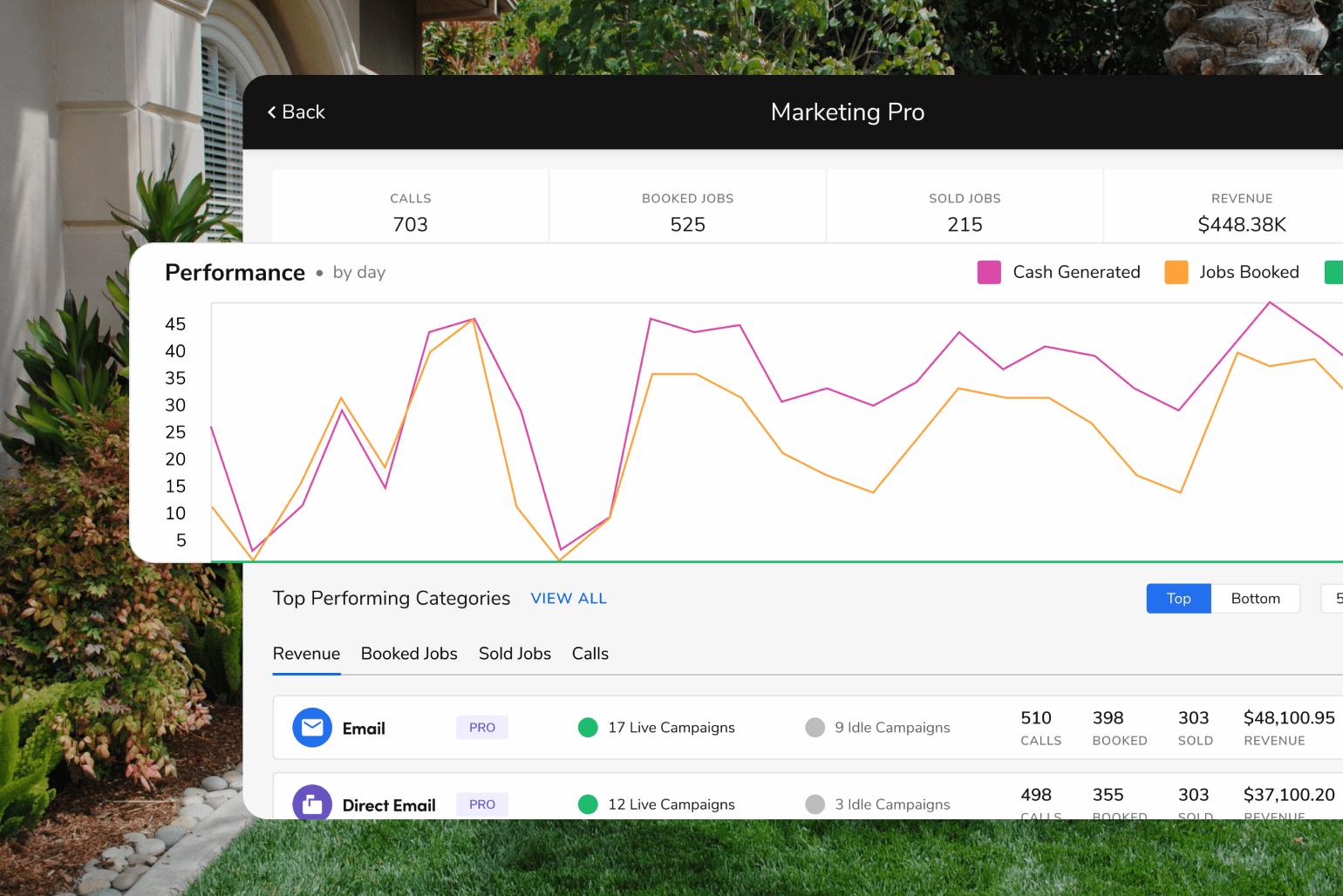What Is Brand Positioning And How Can It Help Your Business?

Developing a brand positioning framework is something every entrepreneur is told to do, but what is brand positioning, and what does it mean?
In the ultra-competitive landscape of field services, the way you position your brand will create a specific perception within your target audience’s minds. You need to understand branding vs. positioning and why it’s crucial.
Here’s everything you should know about the importance of your brand position.
Brand Positioning Explained
The basic brand positioning definition is the act of designing your offering to occupy a distinct position in the minds of your target demographic. It could be something simple like being the number one pest control company in your town for effectiveness. However, aiming for a specific image and achieving it are two different things.
Any brand positioning strategy must describe how a brand differs from its competitors and how it should fit your customers’ minds.
Whether you run a lawn care, pest control, or pool services business, you likely offer the same services as your competitors. Your positioning and branding are how you stand head and shoulders above them.
Why Is Brand Positioning Important?
Developing a brand positioning framework offers numerous benefits for your growing field service business. Undoubtedly, it will encompass and direct your entire marketing strategy, making it a significant investment in time and money spent.
Here are the primary benefits of positioning your brand correctly.
Brand Recall
Brand recall is how likely your target audience will remember your brand when they think about field services in your area. According to one study, it takes 5-7 brand interactions for perfect recall to occur.
Positioning enhances recall by associating your brand with a certain quality or industry space. For example, Volvo has carved out a space in its niche by being synonymous with auto safety.
Market Differentiation
When it comes to field services, most, if not all, of your competitors perform the same exact functions. Pest control is pest control after all. So, how will you differentiate yourself from them?
Positioning is one way you can stand apart from the competition. For example, you may want to frame yourself as a pest control brand that uses only environmentally-friendly chemicals without compromising effectiveness.
Compete On New Battlefields
The most common place for brands to compete is on price. Throwing in regular promotions and discounts is one way of generating business. Competitive pricing is indeed important, but it remains essential to compete in other areas as well.
It could be customer service, experience, or the general quality of your services. Budget airlines cannot simply compete on price without running into the red. It’s why Southwest Airlines markets itself as a sustainable option for flying.
Evoke An Emotional Response
Positioning looks to achieve an emotional response. Even though data is the driving force behind every modern marketing effort, business owners still need to consider how they’re going to play upon the emotions of someone during the purchasing process.
Studies have shown that a branding ad with an above-average emotional response led to a 23% increase in sales.
Create Brand Consistency
Brand consistency plays into your identity as a business. Throwing up a logo and hoping for the best is not enough for you to stand out from the crowd as a brand that people should notice.
A clear positioning strategy ensures your brand messaging, and its elements, remain on point. Consistency in your branding has a significant effect on your future. Consistent branding across all channels has demonstrated a 33% increase in revenue on average.
Positioning drives the overall narrative of your marketing efforts, enabling you to stay on message.
How Do You Find An Effective Brand Positioning?
Now that we’ve answered, “what is brand positioning?” the next question is how to create your strategy and achieve the positioning you desire.
You’ll need to dive into your brand and customers and figure out what you do better than anybody else. Let’s run through the steps you need to follow to position your brand.
Step One – Determine Current Positioning
How are you portraying your brand now?
Look for the unique selling points you’re pushing as part of your existing marketing campaigns. Compare those points to your target market. Your pool care services may emphasize the customer care package, or they may be currently marketed as just another option on the market.
Discover your value proposition and what makes you unique, or at least what you do better than the immediate competition in your neighborhood.
Step Two – Target Your Competitors
Perform a complete competitor analysis of the biggest contenders in your market. Focus on what they do and how they portray themselves. If you have the time, you could even reach out to their customers and ask a few questions.
Social media is another excellent avenue to discover what people like about your competitors. View their social media channels and check back regularly to track how other field services businesses are trying to position themselves.
Step Three – Identify Your Value Proposition
Your value proposition makes you special. Telling everyone you’re the best is not enough for an effective brand positioning framework. What makes you the best specifically?
Build an image based on your strengths and your competitor’s weaknesses. During your research, you likely already figured out where other businesses are coming up short. Use that information to your advantage.
Try not to focus on more than one or two value propositions. Pushing in one area is always more effective than covering too much ground at once.
Step Four – Construct Your Framework
Positioning your brand can seem like an impossible challenge, because there are so many aspects that go into successful positioning. Ideally, your framework should opt for the top-down approach, beginning with your big idea and working down the list.
Here’s how this model works:
Your big idea
Primary value proposition
Target market
Mission statement
Brand tone
Elevator pitch
Message pillars
Consumer touchpoints
Each step in this framework is a guide all its own. Take the time to do your research before finalizing your framework and moving on to the next step.
Remember, if something isn’t working, you can always return to your framework and make wholesale changes later. Your framework is not set in stone. It is guaranteed to evolve alongside the market, your brand, and its competitors.
Step Five – Formulate A Positioning Statement
Your positioning statement is never more than two sentences and demonstrates the unique value of your field service business.
It could be a green angle, a focus on the customer experience, or adopting state-of-the-art technology to change the face of your industry. Whatever avenue you pursue, it must separate you from your competitors.
Answer the following questions when preparing your statement:
Who are you targeting?
What’s your flagship service?
What benefit does your service offer?
Where is the proof of that benefit?
The answers to these questions should all fit into your positioning statement. Every company has one, from Amazon to your local delivery company.
Step Six – Concentrate On The Emotional Connection
Emotional engagement is the essence of what makes a brand successful. Approximately 70% of highly emotionally engaged customers reported spending twice as much as those with less emotional engagement.
Connect with your customers on a human level before moving in with the hard sell. For example, if you’re knocking on doors, take the time to meet your potential customers and get to know them as people, not prospects.
Developing a solid brand position means reinforcing your unique value propositions during the sales process. Pinpoint the most significant pain points identified by the customer and figure out how your brand can solve those problems.
It’s all about developing that value. Note that this will take a substantial amount of time. You cannot expect to achieve spectacular positioning overnight.
Step Seven – Drill Your Customer-Facing Team
As a field services business, the chances are your entire team comes into contact with customers regularly. Your employees are your primary brand ambassadors.
Train your team to convey the values and ethics of your brand when speaking to your customers. Ensure that you stay true to your brand to avoid creating inconsistencies.
Step Eight – Be Patient
Following the previous seven steps will set you up for success in the future. However, positioning a brand effectively takes an immense amount of time.
You cannot expect to supplant the established brands overnight. This is just as true for established businesses as it is for new ones. It takes years to raise brand awareness and develop trust with your customers.
Be consistent in your efforts, and you’ll keep chipping away at your competitors’ market share.
Branding Vs. Positioning: What’s The Difference?
Branding and positioning are often used interchangeably, but this is a misconception. While there is significant overlap between the two terms, they are distinct.
Branding is the process of crafting your company’s image and its product. Colors, design, logos, and marketing strategies create your brand’s story. On the other hand, positioning focuses on occupying a position within the customer’s mind.
Since field service businesses are abundant, branding and positioning are critical for crafting a unique image and perception.
Both concepts play a role in helping you stand out from the competition. However, branding will always come before positioning. You cannot have a successful business without both.
Brand Positioning Strategy Examples
Understanding the power of brand positioning is challenging since many guides focus on the abstract side of the concept.
Let's examine three brand positioning strategy examples using prominent brands to enhance your understanding and make it easier to develop your positioning strategy.
1. Tinder Vs. Bumble
Tinder and Bumble are both online dating apps. They use most of the same features and have the same concept in mind: to match singles looking for relationships.
Former Tinder employee Whitney Wolfe founded Bumble. She created Bumble with the concept of empowering women in mind. It focused on improving the female-user experience, including promoting the idea of professional connections and friendship.
However, Tinder was the pioneer of the online dating app concept. They are the biggest name in the space and have positioned themselves as one of the most dominant dating platforms.
Bumble’s positioning has focused on making women the initiators and revolutionizing the dating world. Its brand is about differentiating itself from companies like Tinder.
Tinder occupies a leadership position and concentrates on being the leader in online dating by leveraging its long history and well-known popularity. In other words, it markets itself as being the best.
2. Starbucks Vs. Dunkin’ Donuts
Starbucks sells coffee, and Dunkin’ sells donuts. At first glance, they may seem like different companies. However, they target the same people: the morning crowd on their way to work. Both are leading names in the battle of the early-hour coffee run.
Starbucks emphasizes a seamless in-store experience, whereas Dunkin’ is more about getting in and out when you’re in a rush. Dunkin’ keeps its offerings simple, whereas Starbucks highlights the ancient craft of coffee brewing.
In terms of branding, these two companies couldn’t be more different. Starbucks rocks the green and brown, whereas Dunkin’ opts for the pink and orange.
The positioning couldn’t be more different either. Starbucks has long touted its commitment to quality coffee, emphasizing its baristas and where their coffee grounds have been sourced. It wants to highlight itself as a premium coffee brand with the convenience of a fast-food chain.
Dunkin’s position is based on being the leader of donuts and coffee. They also promote the convenience of visiting them. They want to show their customers that they’re simple and unpretentious, making it the fastest way to get your morning shot of caffeine.
3. Spotify Vs. Apple
Both Spotify and Apple offer music. Like similar companies, the apps and how their subscribers listen to music are essentially the same. What separates them from each other is their positioning.
Spotify concentrates on personalization, whereas Apple touts itself as a high-quality tech brand known worldwide.
In this comparison, Spotify leads out with its price-based strategy. Spotify offers no difference in price when it comes to their premium offerings, but their free plan makes them stand out. It gives them the accessibility advantage, allowing them to position themselves as the most convenient option to access music.
Apple promotes its catalog consisting of more than 60 million songs. It utilizes the quality-based approach by offering exclusive streams and features like on-screen lyrics. Like its other offerings, such as smartphones and laptops, Apple successfully leverages its technological edge.
Unlike Spotify, Apple also has the advantage of using its success in other areas to inform its music offering.
Make Field Service Management Easy With FieldRoutes
Positioning is everything in the field services business. With practically every brand offering the similar services to the same demographics, you cannot expect to differentiate yourself based on your package of services alone. You need to figure out what makes your field services business unique.
Create your positioning framework and let FieldRoutes streamline how you push your brand out into the open. Our Cloud-based platform offers automation tools for every aspect of your field services operation, from scheduling, routing, payment collections, and even marketing.
Become a top leader in pest control, pool, or lawn care marketing with FieldRoutes. Effectively marketing your field service business can be the difference between losing and securing regular business throughout the year. To learn more about the features offered by FieldRoutes, request your free demo now.





